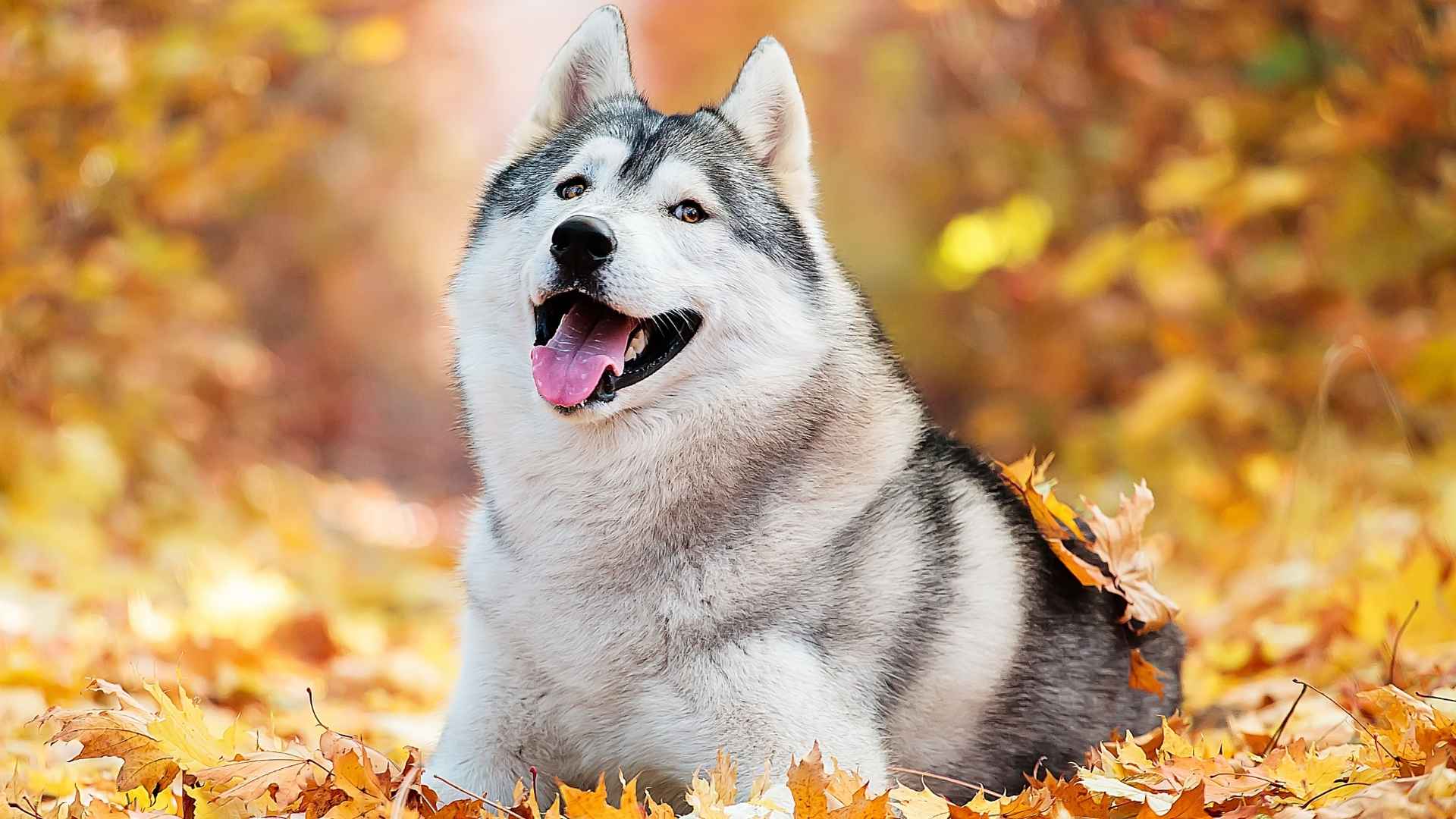You look at a dog and see its eyes, coat, or size. But you miss what actually handles most of its work—its mouth.
Dogs don’t just bite. They tug, grip, carry, chew, defend, and explore everything with their teeth. And while every dog has a bark, not every dog has bite strength that holds up over time. Some break toys in a day. Others need dental work by age five.
But there are also breeds whose teeth are built like tools—strong, thick, and made to last. Most people never think about this when choosing a dog. But the difference it makes is massive. Especially if you’ve dealt with chipped canines, vet bills, or toys shredded before they’re even used.
In this article, we’ll walk you through the breeds that bring more than personality. These are the ones whose teeth hold up through it all, naturally and powerfully.
Dog Breeds With Naturally Strong Teeth
1. German Shepherd

German Shepherds tend to have a straight, full-mouth bite with well-aligned canines and molars, thanks to balanced skull proportions and jaw mechanics. This symmetry minimizes pressure points and uneven wear, allowing for more efficient gnawing. Their chewing pressure is distributed evenly, reducing early erosion.
Texture-Driven Chewing Behavior
They often prefer resistance-based chewing, a trait observed during tracking and training exercises. Dense rubber or bone-like textures stimulate their jaws while also acting as natural abrasives. This kind of wear helps reduce tartar buildup and delays tooth decay over time.
Muscle-Jaw Coordination
Shepherds display high neuromuscular control in their jaw movements, allowing them to carry, hold, and apply pressure with precision. This coordination is evident when they are trained for bite sleeves or object retrieval tasks. It’s the repetitive activation of this control that keeps dental strength engaged.
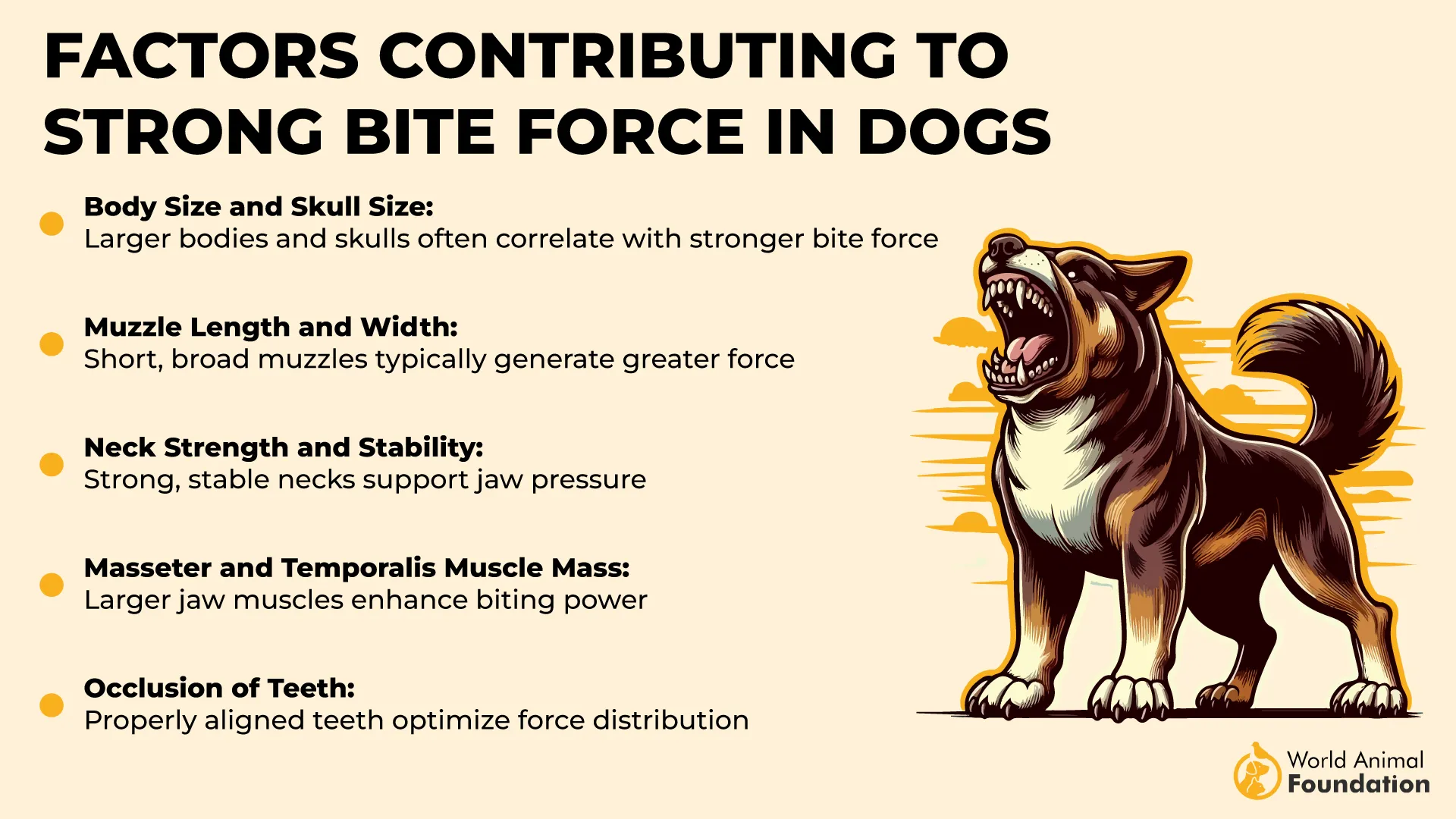
Health-Backed Durability
Their oral condition often reflects the breed’s naturally high metabolism and immune resilience. When supported with appropriate nutrition and durable chewing materials, their teeth remain clean and firm with minimal external intervention. This supports overall dogs’ dental health in a way that’s built into their routine.
2. Golden Retriever
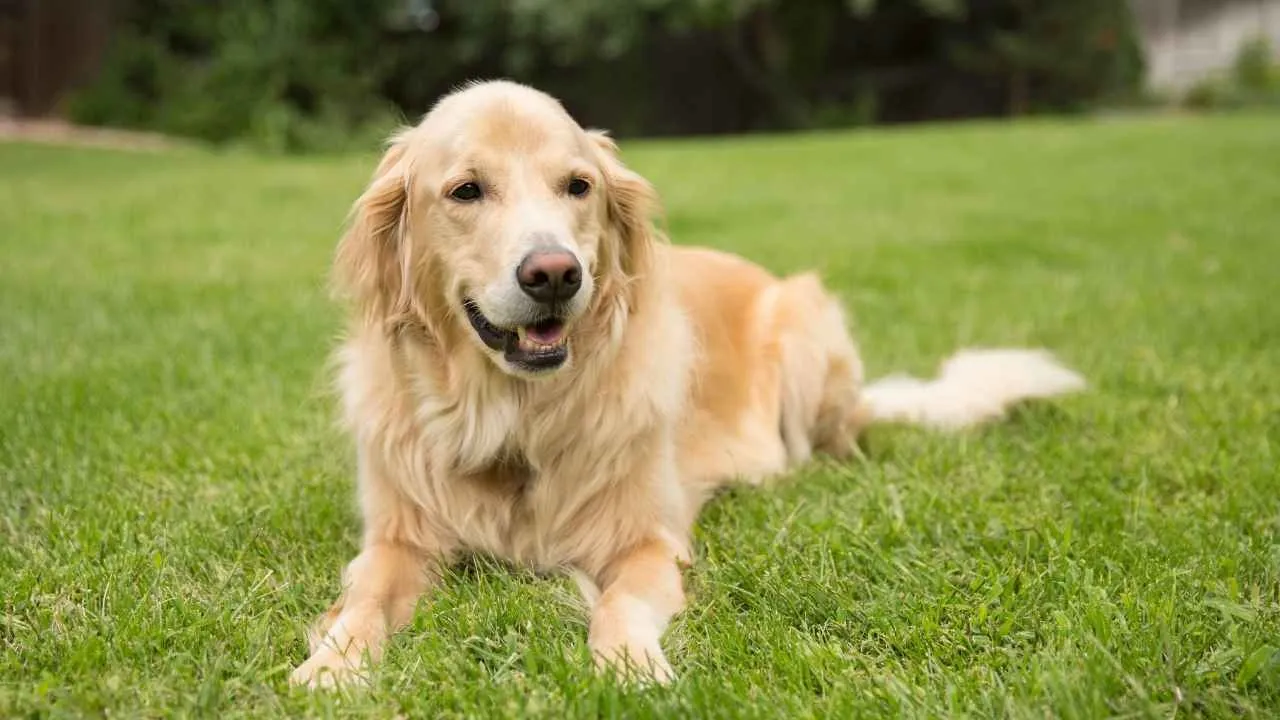
Golden Retrievers are known for their “soft mouth,” but what’s often missed is how precisely their jaw aligns. Their teeth close with minimal gaps, allowing even pressure across the bite. This alignment supports even wear and less risk of food lodging between molars.
Strength in Daily Retrieval
They were bred to carry game birds for long distances without damage, requiring constant grip control, as per Britannica. That repetitive motion—gently holding but never dropping—engages deep jaw muscles and maintains subtle tooth pressure. It keeps their bite active without causing enamel strain.
Low Tartar Accumulation
Their saliva composition and chewing patterns contribute to less buildup over time. Combined with a steady diet and early dental care, Golden Retrievers often show cleaner teeth into middle age. This naturally supports long-term oral hygiene with minimal intervention.
Chewing Behavior That Helps
They tend to favor moderate chewers over aggressive tearing, which creates friction without microfractures. Many owners notice how they instinctively work their way around textured toys, giving all sides of their dog’s teeth balanced wear. This self-regulated behavior protects tooth shape and strength.
3. Rottweiler
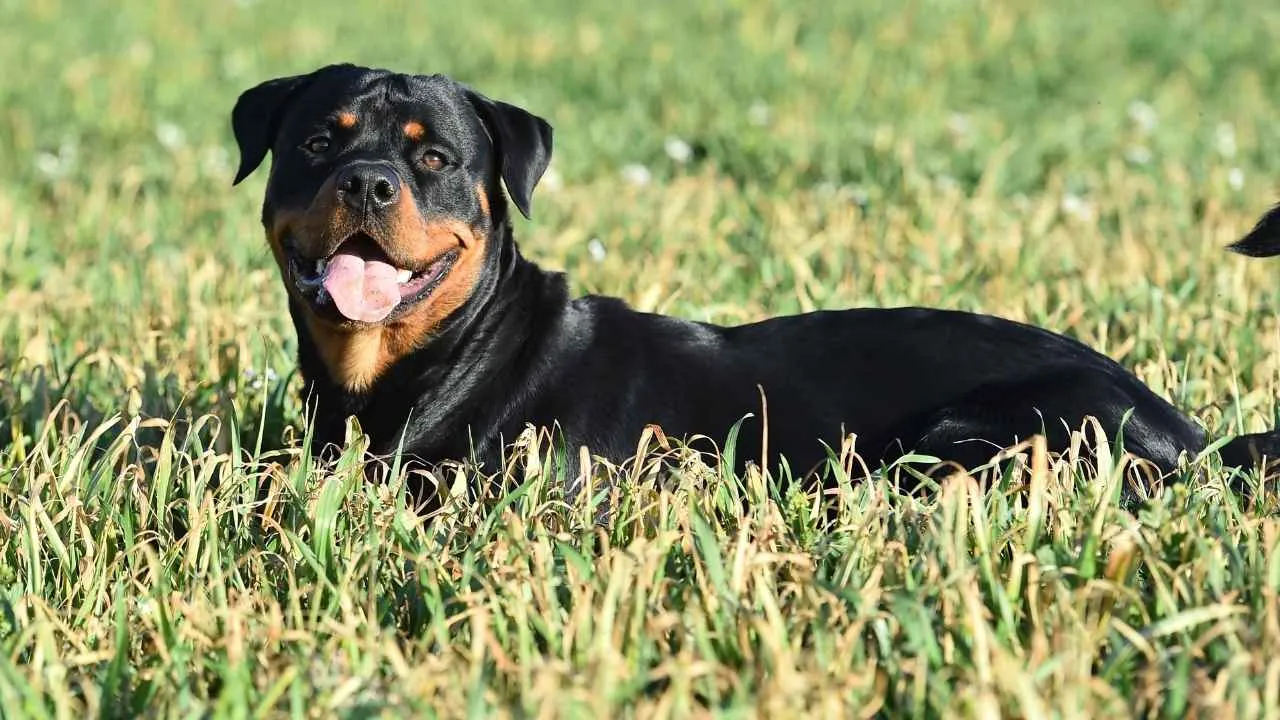
The Rottweiler’s head is built with remarkable skull density, anchoring a set of teeth designed for grip and endurance. Their molars are broader than those of many breeds, giving them strong leverage in their bite. This skeletal strength translates directly into long-term dental resilience.
Efficient Chewing Behavior
They’re methodical chewers—not erratic or hyper-focused on speed. You’ll often see them working through tougher textures deliberately, which helps clean between teeth naturally. This habit plays a significant role in supporting dental hygiene without needing constant intervention.
Enzyme-Rich Saliva Production
Rottweilers produce higher volumes of saliva during chewing compared to more passive breeds. This saliva contains natural enzymes that assist in breaking down food particles. Continuous flushing reduces plaque buildup and keeps healthy teeth intact longer.
Impact of Early Jaw Training
Breeders often begin resistance-based jaw activities while pups are still developing. Rope tugs, weight pulls, and object carries are all encouraged before adulthood. These routines help pet parents condition the jaw muscles while also aligning erupting adult teeth more effectively.
4. German Shorthaired Pointer
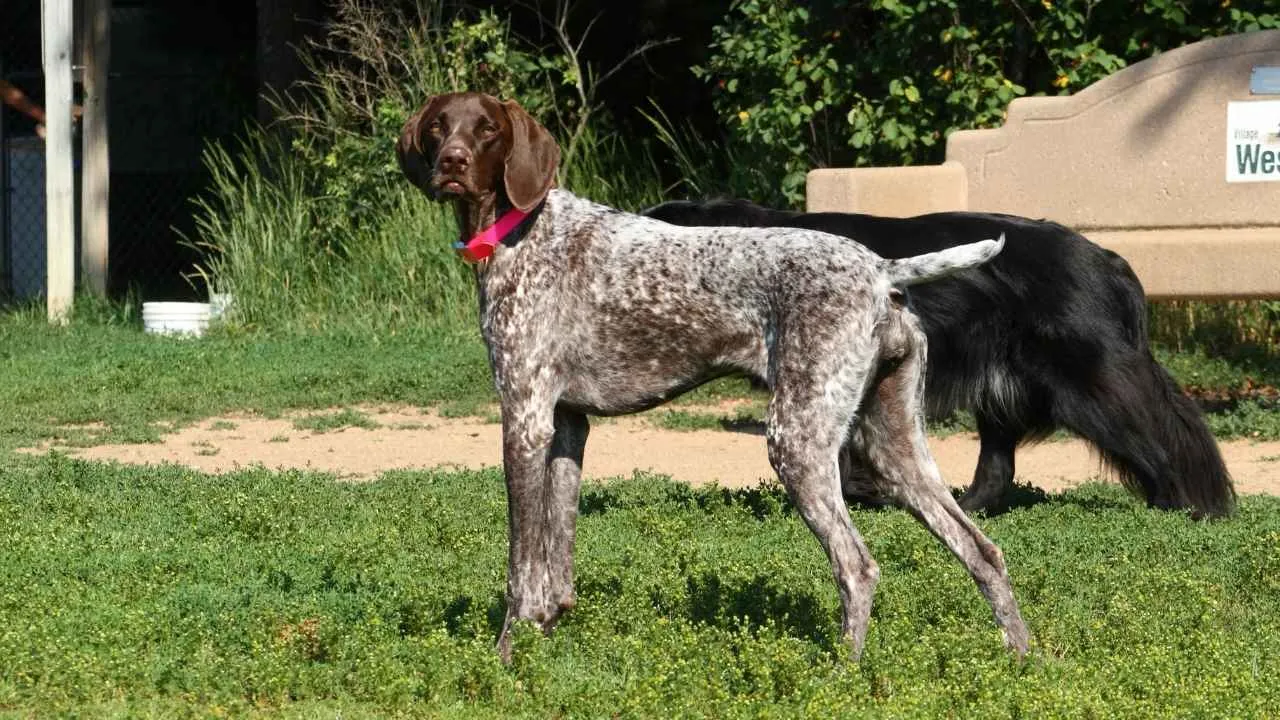
The German Shorthaired Pointer was developed to sprint, retrieve, and trail across varying terrain—all of which involve frequent jaw use. Their athleticism is tied to oral strength; even as pups, they tend to carry objects with an unusual grip confidence. That daily physical output keeps the jaws naturally exercised.
Active Chewing Keeps Teeth Sharp
Because they’re highly interactive dogs, they often engage with rope toys, balls, and natural textures for stimulation, as mentioned in WebMD. Their play isn’t passive—it’s pressure-driven, strengthening both teeth and surrounding muscles. Chewing becomes a routine activity that inadvertently benefits their oral health.
Minimal Tartar Build-up in Actively Engaged Dogs
Pointers with high outdoor time and physical engagement tend to show slower tartar accumulation. Their frequent gnawing motions work against plaque naturally, especially when combined with regular brushing routines. Owners who prioritize texture-based toys often notice less yellowing.
Naturally Alert to Oral Discomfort
This breed tends to react early to subtle discomfort, making it easier to catch issues before they escalate. Observing behavior shifts—hesitation in grip or softer bites—can help maintain your pet’s teeth at peak condition. Their sensitivity makes dental care more preventive than reactive.
5. Siberian Husky
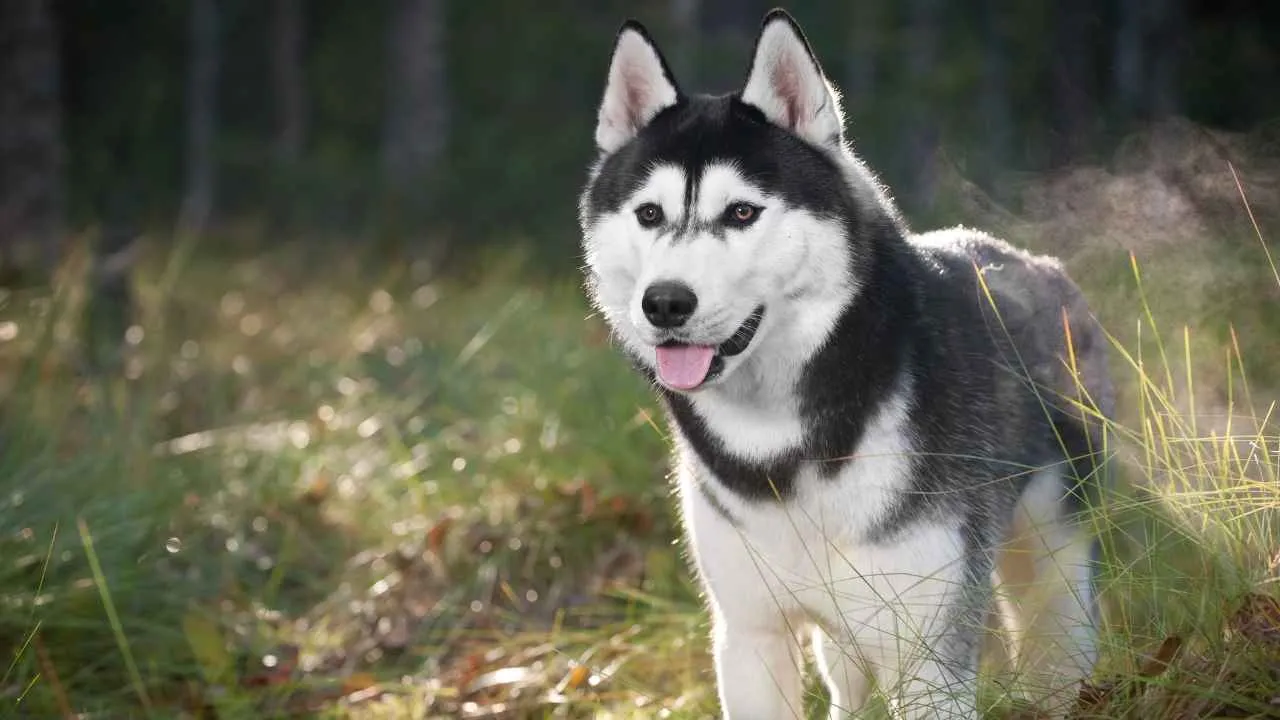
Siberian Huskies were developed to survive freezing climates where frozen meat and bone fragments were part of their regular intake. Their teeth adapted to pierce through semi-frozen food, requiring both pressure strength and endurance. That cold-weather functionality still reflects in their jaw alignment and bite rhythm today.
Natural Enamel Efficiency
This breed shows a lower occurrence of surface erosion, even with minimal intervention. The clean splits they make when chewing bones or solid objects help reduce tartar accumulation naturally. As a result, many working Huskies maintain visibly strong, white teeth well into adulthood.
Constant Motion Builds Muscle
Their playful energy isn’t just behavioral—it’s anatomical. Whether tugging, chasing, or gripping objects mid-run, their jaws stay in motion. That high frequency of dynamic movement contributes to stronger periodontal support over time.
Minimal Assistance Needed
Their habits—ripping, chewing, and gnawing—contribute to keeping their teeth clean even without frequent brushing. This naturally built-in dental upkeep is rare in many modern breeds.
6. Doberman Pinscher
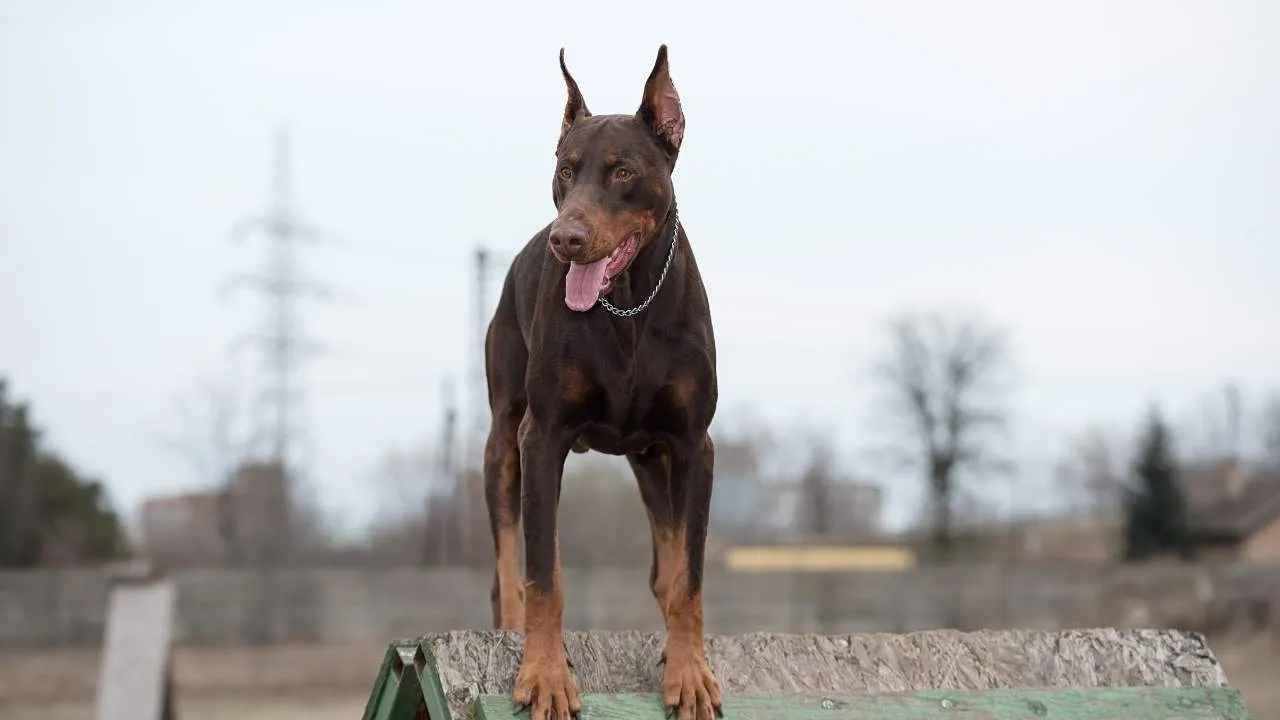
Dobermans have a narrow, elongated skull that aligns their teeth for a strong forward bite. This alignment contributes to more controlled pressure during bite engagement, particularly effective in training scenarios. Their upper canines often meet the lower incisors in near-perfect occlusion.

High Chewing Drive With Focus
Dobermans show a focused chewing behavior, often concentrating pressure on one point until it gives. This behavior helps maintain jaw strength and naturally scrapes plaque from hard-to-reach areas. It’s not just physical—it’s deliberate.
Tolerance for Oral Exams
Their temperament allows most Dobermans to stay calm during mouth inspections, a trait noted by more than one vet association. That makes it easier to detect any early-stage issues and intervene without trauma. Routine handling around the mouth is often tolerated from a young age.
Balance of Power and Sensitivity
Despite having strong teeth, they avoid excessive gnawing when not stimulated, likely due to their high responsiveness. This makes them easy to manage with structured chew routines and keeps dental wear balanced. Their protective instinct doesn’t spill over into destructive oral behavior when trained properly.
7. Bernese Mountain Dog
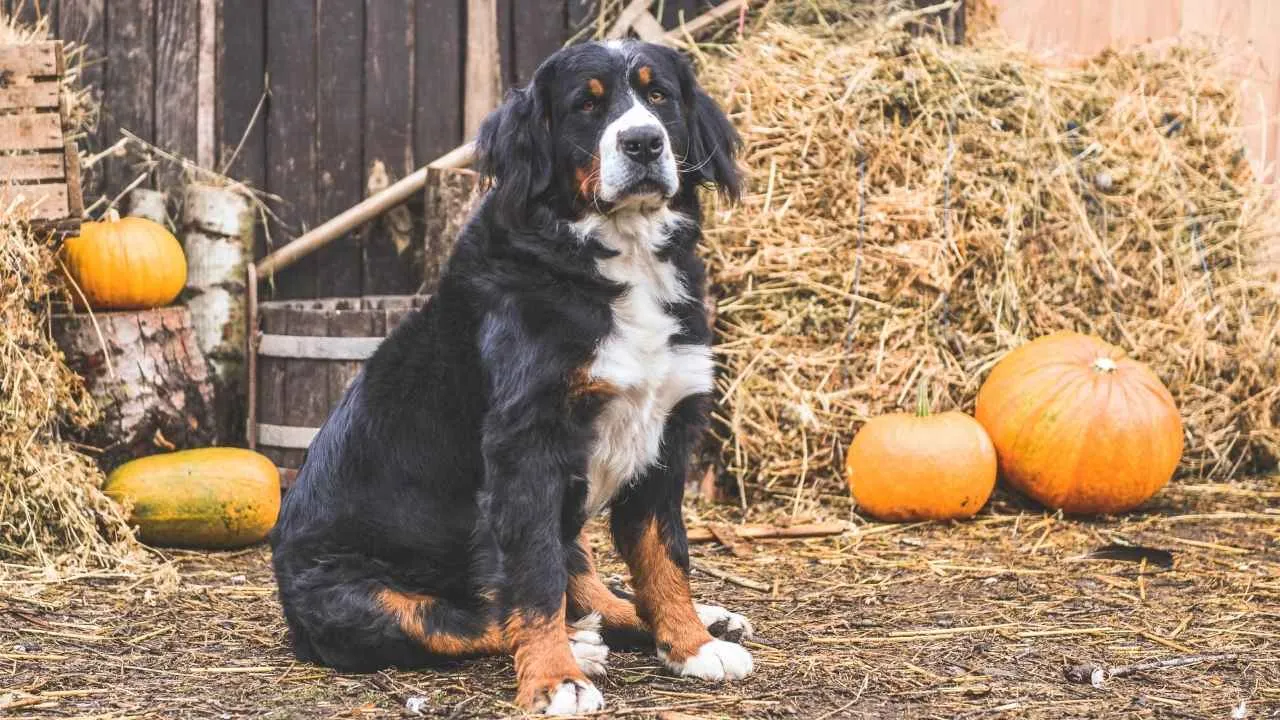
The Bernese Mountain Dog has a broader skull and wider jaw than most working breeds, allowing room for larger, deeper-rooted teeth. This jaw depth gives stability during pressure-heavy chewing. They can gnaw through thick cartilage and tendon without chipping or wearing quickly.
Cold-Climate Chewing Adaptation
Historically used in the Swiss Alps, their teeth evolved to tolerate frozen textures without fracture. Their molars were regularly tested on frozen meat and bones—something not all dogs could handle without dental stress. That kind of resistance still shows in their modern chewing habits.
High Pressure, Low Wear
Berners have a strong vertical bite, meaning their teeth press down instead of shearing at angles. This lowers the chances of micro-fractures, especially in molars. Their chewing technique relies more on pressure than scraping, which slows enamel erosion.
Built for Stability and Control
Their slow, deliberate chewing rhythm differs from faster chewers, giving them more jaw control over dense items. It’s part of why they’re labeled gentle giant types; their bite is powerful, but measured. That pattern plays a big role in preserving their natural dental strength.
Conclusion
You don’t notice strong teeth until you do. They quietly protect your dog from tooth problems, bad breath, and even infections you can’t see coming.
When you choose a breed with naturally tough enamel and aligned jaws, you’re setting the stage for fewer dental problems later. It’s not just about biting—it’s about total canine health.
From avoiding tartar buildup to preventing gum disease, these breeds have a head start. But even they aren’t immune without effort. Good oral health still depends on what you feed, how you chew, and what habits you build.
Strong teeth are a gift, but maintaining them is a choice. And for your dog, that choice plays a crucial role in living longer, healthier, and happier.


